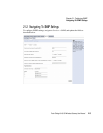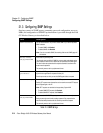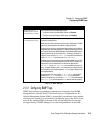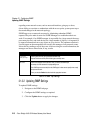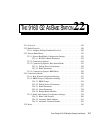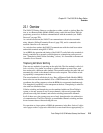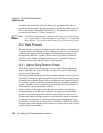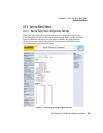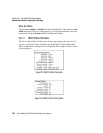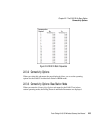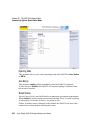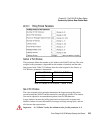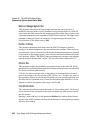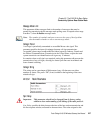
Chapter 22: The 9160 G2 As Base Station
Radio Protocols
220
Psion Teklogix 9160 G2 Wireless Gateway User Manual
described in the sections that follow. In addition, the appropriate radio and host
parameters must be applied. The radio parameters are found in the Radio pages for
Narrow Band radios, as described in Section 22.3.1. The parameters for the hosts
are described in Section 22.5 “Hosts” on page 243.
Note: The 9160 G2 main parameters should first be set up as described in Chap-
ter 4: “Quick Steps For Setup And Launch” and Chapter 5: “Configuring
Basic Settings”. For details on the RF protocols, see the following sections.
22.2 Radio Protocols
RF protocols allow terminals to communicate with a base station by sharing the use
of a radio channel in an efficient way. Psion Teklogix systems use one of two types
of RF protocols: the Psion Teklogix Adaptive Polling/Contention protocol or the
non-proprietary IEEE 802.11 protocol. When used as a base station or RRM, the
9160 G2 uses the Adaptive Polling/Contention protocol. The 9160 G2 supports
simultaneous base station and 802.11 access point operation.
22.2.1 Adaptive Polling/Contention Protocol
The Adaptive Polling/Contention protocol is always used on Narrow Band radio
systems with baud rates of up to 19.2 kb/s, and may also be used on Spread Spec-
trum systems at higher rates.
Terminals operating with this protocol do not transmit unless they receive polls from
the 9160 G2. Terminals are generally polled en masse. Following each poll, groups
of terminals are assigned response windows in which they may respond to the poll.
If a “collision” occurs—more than one terminal attempts to respond in a particular
window—the 9160 G2 that is polling divides and reassigns that group until the col-
liding terminals can respond without a collision.
Adaptive features of this protocol allow the response windows to be adjusted to
accommodate high or low RF traffic conditions, and to prevent data from being
queued too long when a particular terminal has a burst of data to send or receive.
Systems using adaptive polling/contention can use the cellular option so that termi-
nal operators can roam the site, maintaining uninterrupted communication as they
pass between coverage areas. If cellular base is not enabled, a “RESET: Press Enter”
message appears on the terminal screen each time an operator moves from one base
station coverage area to another.




